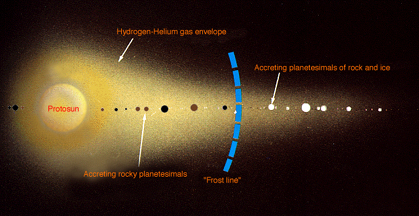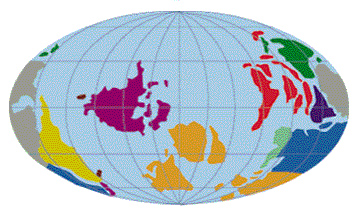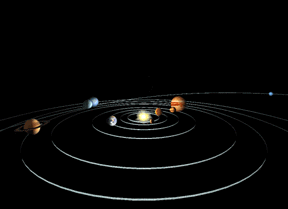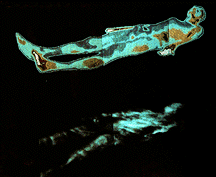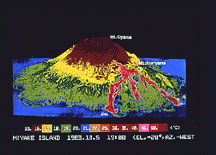Exploratour - The Archean Age
Click on image for full size
Windows Original
The Archean is the name of the age which began with the forming Earth, as illustrated in this picture. This period of Earth's history lasted a long time, 2.8 billion years! That is more than half the expected age of the Earth! And no one really can say what went on all that time. Nevertheless, a lot must have happened because Earth changed dramatically and evolved in a way that the neighboring planets did not. By the end of the Archean, the Earth was just beginning to come alive, but Mars was already a frozen ball with no life and no ocean. This tour is a presentation of all the things that happened in this age.
To set the stage, the solar nebula out of which the Earth & planets formed was just being cleared of gases still hanging around (as shown in this picture) by a powerful stellar wind from the newly formed Sun. This process blew away whatever the Earth had for an atmosphere to start with. Much of what we will describe next in the pages that follow happened together, there was not a specific sequence of events. To proceed with the tour, just press the forward link on the button at the top of the page. To read more about what sort of atmosphere the Earth may have started with, check the links at the bottom of this page.
This is page 1 of 10


